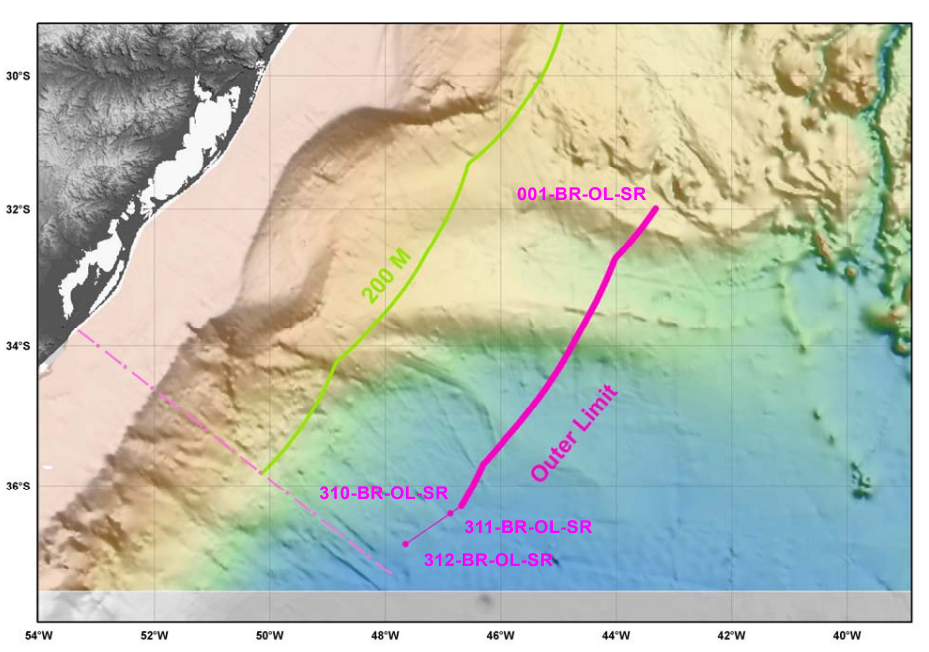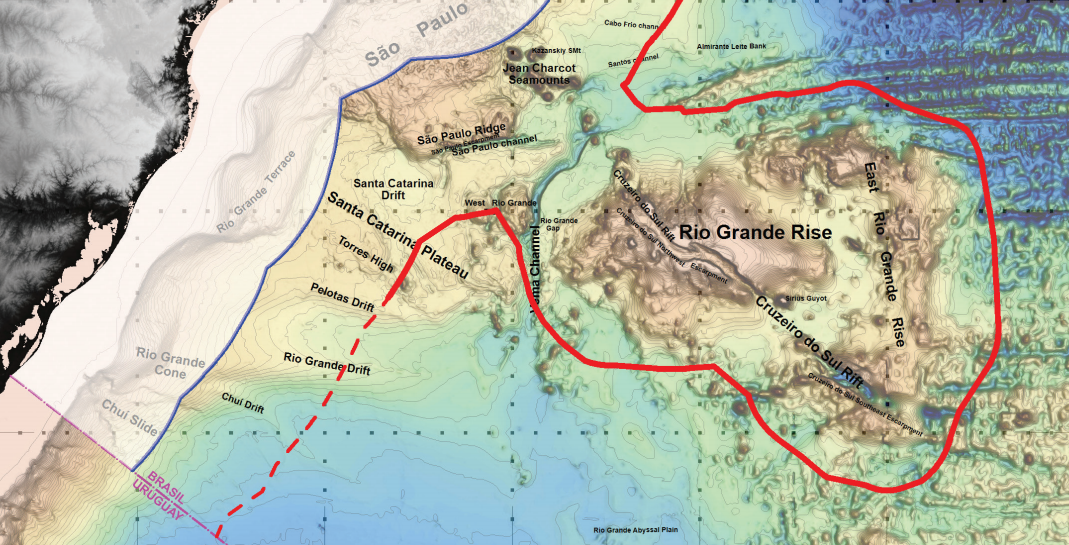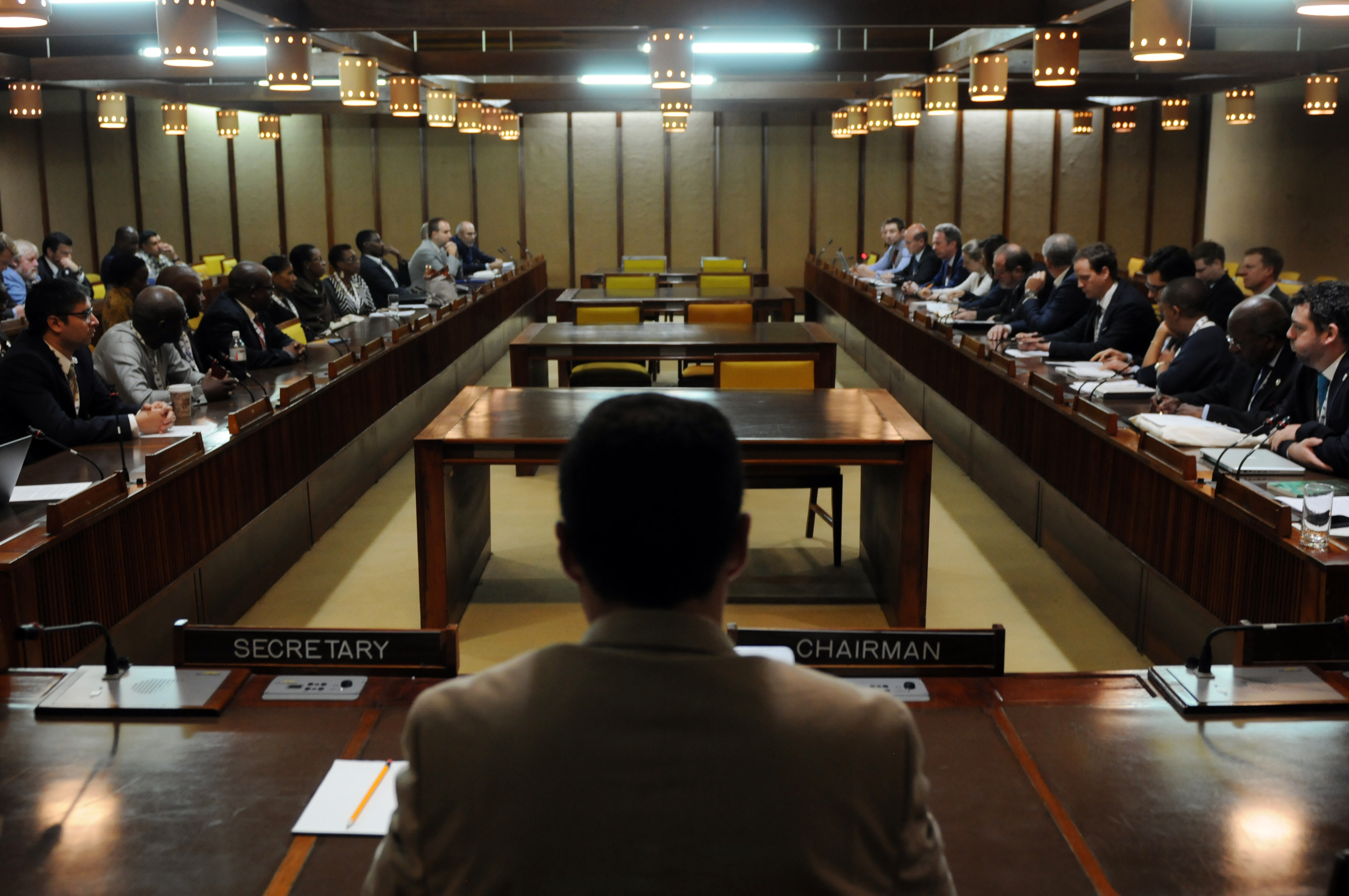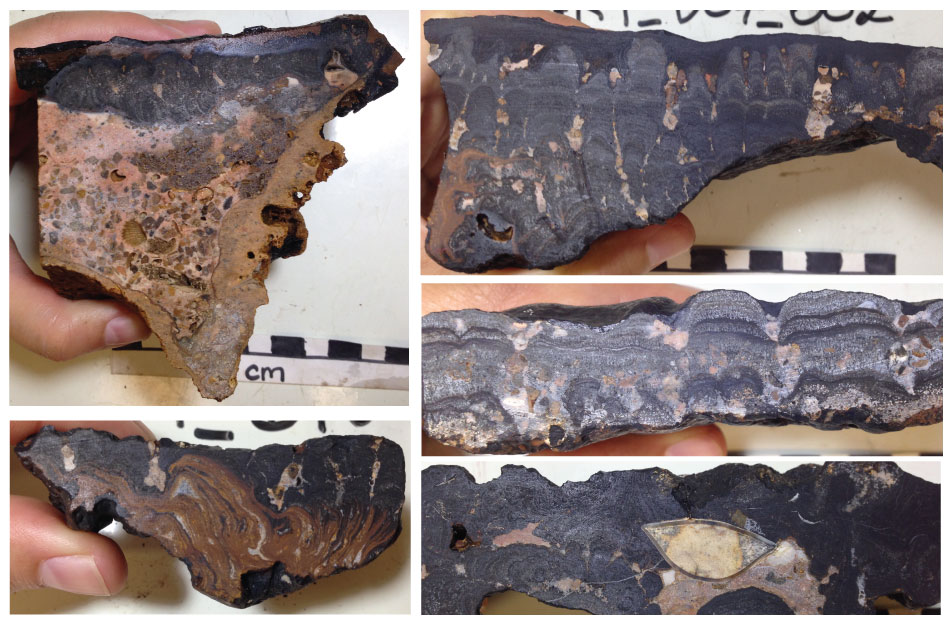One of the most significant discussions in deep-sea mining is happening not a the International Seabed Authority, but in the offices of the Commission on the Limits of the Continental Shelf at the United Nations’ headquarters in New York. The CLCS is responsible for assessing outer continental shelf claims, those portions of a nation’s continental shelf that extend beyond the limits of an Exclusive Economic Zone, but for which the Law of the Sea allows exclusive exploitation rights to seabed mineral resources found there. But first, a member state must demonstrate that they have a credible claim to that portion of the Area.
Up for deliberation over the next several years are Brazil’s claims to their extended continental shelf and the cobalt-rich Rio Grande Rise.
In 2004, Brazil submitted a survey of the extended outer continental shelf contiguous with its recognized EEZ. Coincident with this survey, Brazil petitioned the CLCS for recognition of an outer continental shelf claim that comprised nearly 1,000,000 square kilometers of seafloor beyond the 200 nautical mile limit of their exclusive economic zone. This survey was based on 17 years of geologic and bathymetric studies to establish the full extent of Brazil’s continental shelf.
Three years after the submission, the CLCS came back with its first recommendations. These recommendations advised Brazil to use the foot of the continental slope for determinations of extended continental shelf claims and prompted Brazil to initiate the second phase of outer continental shelf research, resulting in a series of resubmitted claims, subdivided into geographic regions, in the mid-2010’s.
Now 30 years into the process or expanding their mineral rights into the Area, Brazil is beginning to see results.
Last March, the CLCS issued its recommendations for the first of Brazil’s revised submissions, the Brazilian Southern Region. This region covers the continental margin stretching from Brazil’s maritime border with Uruguay in the south to the São Paolo Ridge to the north, including the Rio Grande Cone, Rio Grande Drift, and Torres High, though, importantly, not the Rio Grande Rise. The claim would almost double Brazil’s seabed claims in the region south of the Santa Catarina Plateau.

In its recommendations, the CLCS approved Brazil’s proposed extended outer continental shelf limits for the Southern Region, declining only to extend the boundary to the proposed maritime border with Uruguay, citing a lack of information about the specific limits of the continental shelf in that region, and ruling that the Torres High to the north was not demonstrated to be part of Brazil’s continental shelf.
This determination represents a major win for Brazil. As the first re-submission under consideration, the CLCS validated both Brazil’s claims and the methodology underpinning those claims, establishing precedent and paving the way for the remaining three re-submissions still under consideration by the commission. However, the CLCS’s recommendations did not completely validate all of Brazil’s arguments. Within the recommendations was the acknowledgement that “based on the geological features recognized on the seismic profiles such as SDRs and fault patterns as well as gravity and magnetic anomalies, the Subcommission considers that the Santa Catarina Plateau with the Torres High, which are located between the onshore Parana igneous province and the more seaward located Rio Grande Rise, is the product of rifting and hotspot-related magmatic underplating processes. The Subcommission could not find enough support for the continental nature of the Torres High proposed by Brazil.”
Not only does this determination limit Brazil’s claim to the Torres High, but sets a precedent for future determinations of the Brazilian Oriental and Meridional Margins, which includes the entirely of the Rio Grande Rise.

The Rio Grande Rise is the jewel on top of Brazil’s extended outer continental shelf crown. It is a massive seamount just off the South American coast that is rich not only in biodiversity, but in cobalt, tellurium, and other rare earth elements essential to next-generation energy technology. The origin of the Rio Grande Rise is still very much under discussion, with some studies indicating that it is an ancient volcanic hotspot, a remnant of a former continent, or a fragment of South America. How the Rio Grande Rise formed will ultimately determine whether or not it falls within Brazil’s extended outer continental shelf.
In a statement delivered to the International Seabed Authority, representatives of Brazil asserted that “the Meridional Margin comprises the Rio Grande Rise as natural prolongation of Brazil’s land territory.”
The Commission on the Limits of the Continental Shelf isn’t Brazil’s only path to the Rio Grande Rise. The member state also holds an ISA exploration lease for cobalt-rich crusts in the Area. However, an ISA exploration lease comes with far more limitations than an extended continental shelf claim, not the least of which is that the draft regulations for exploitation in the Area and the financial model for distributing deep-sea mining profits for “the good of [hu]mankind” have not yet been finalized. An extended continental shelf claim would give Brazil exclusive right to develop resources on the Rio Grande Rise, without the need to include the International Seabed Authority in the enterprise.
CLCS meetings are private, with no allowance for public attendance. Over the next several sessions they will discuss the merits of Brazil’s additional 3 re-submissions. As the Brazilian Oriental and Meridional Margins was the most recent re-submission, it will be the last to be discussed. The Brazilian Equatorial Margin re-submission is next on the docket. Re-submissions are given priority over new submissions, so while there is, as of yet, no timeline, CLCS recommendations regarding the Rio Grande Rise could occur within the next few years.
The Permanent Representative of Brazil to the ISA could not be reached for comment.




